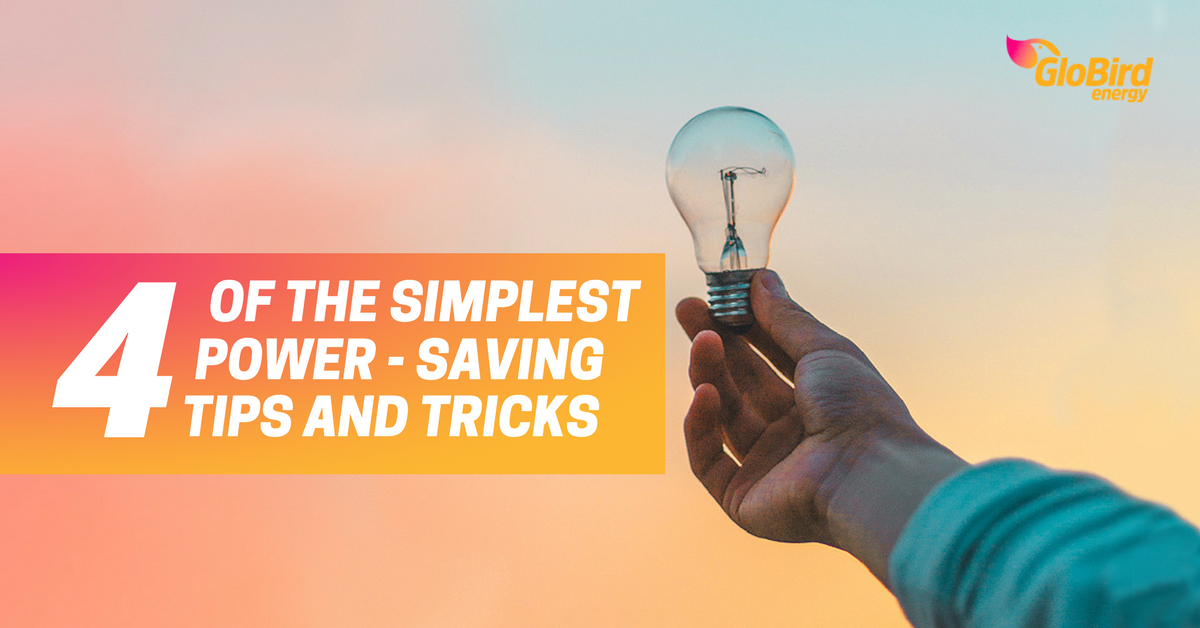In a previous blog post we listed 13 super simple energy-saving ideas for winter.
This time, we’re going to look at four simple ways you can save power without changing your lifestyle.
While each little bit might seem like a small saving, the more you can do to reduce your energy use, over time, the more money you save … and the more you help the environment.
The off switch
You might not know that there’s such a thing as standby power, where an appliance that’s plugged in with the power point switch on continues to receive power, even though the appliance itself has been switched off.
It’s just a trickle of electricity that’s keeping your television, gaming console, stereo system, computer, or whatever, ready to fire up at a moment’s notice, but think of it like a leaking tap. Wouldn’t you want to switch off the drip to save that wasted water?
So, make sure you switch off your washing machine, dryer, and anything else you use intermittently at the wall when you’ve finished using them.
But who wants to have to reach down behind the TV cabinet, couch, shelves, or desk to switch things on and off at the wall socket all the time?
You don’t have to, because there’s a pretty simple solution:
Energy-saving powerboards
They work like this. You plug the powerboard in, then plug your major appliance into the “master” socket. This would be the TV itself or perhaps your computer. You then plug in any peripheral appliances – DVD/Blu-ray player, external speakers, printer, and so on – into the “slave” sockets.
When you switch off the master appliance, the powerboard detects the drop in power and completely switches off the supply to that appliance as well as all the slaves.
But wait, you say, what about my Foxtel box? Don’t worry, these smart powerboards come with an “always on” socket so that anything that needs to be powered all the time is treated as the exception.
They also offer surge protection and some come with USB charging slots. Here’s one we found for around $35 at Bunnings or you can step things up a notch with this one, which has a readout showing how much power those appliances are using and how much it’s costing to run them.
There are others that operate with a remote control, including some that allow up to three boards to function off the same remote, letting you easily switch everything off.
The EcoSwitch
If you only have a single appliance plugged into a wall socket, or if you’re happy with your regular powerboards and don’t need an “always on” appliance, check out the EcoSwitch.
It essentially puts your powerpoint on/off switch in a much more convenient place by giving you a nice, big green button on an extension cord. No need to bend down and reach round to get the full benefit of “completely off”.
EcoSwitch estimates that the average household can slash its electricity use (and bill) by over 10 per cent by eliminating standby power.
Solar charging
If you don’t have a solar array on your roof you can still harness the energy of the sun to save some of your regular electricity costs, like charging your smartphone or tablet.
The Solio Bolt battery pack and solar charger also offers handy portable back-up power for any USB-charged device.
It takes a day of direct sunlight to fully charge the battery, but then you can use that to charge up your smartphone at about the same rate that you would from a wall socket – and it stores the charge for up to a year!
You can also find solar-powered reading lamps, keyboards, kettles, water filters, and even backpacks. We might look into them another time.
The sooner you start changing your energy-use habits, the sooner you start saving money.
